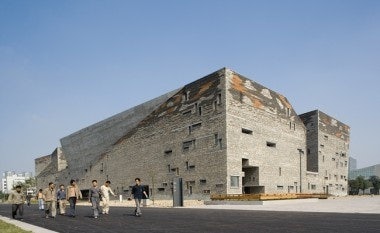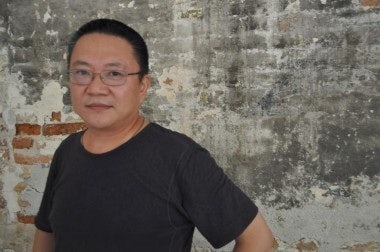Wang 37th Winner Of Prize, First From China#

Massive skyscrapers designed by international architects may be among the most visible in urban Chinese skylines, but the country's home-grown designers have spent the last several years steadily making names for themselves both at home and abroad. Of these mainland Chinese architects, few have gained as much acclaim abroad as 49-year-old Wang Shu, whose melding of traditional Chinese aesthetics and modern sensibilities are perfectly suited to his home-base of Hangzhou, the southeastern Chinese city that has been, for centuries, a hotbed of original architecture and design. This week, Wang's growing international profile hit a new high, as the architect was awarded the 2012 Pritzker Prize, becoming the first winner from China. (Winner I.M. Pei, who received the prize in 1983, was born in China but has lived and practiced in the United States for nearly 80 years.)
Established in 1979 "to honor annually a living architect whose built work demonstrates a combination of those qualities of talent, vision, and commitment, which has produced consistent and significant contributions to humanity and the built environment through the art of architecture," previous winners of the Pritzker Prize include Philip Johnson, Richard Meier, Frank Gehry, Renzo Piano, Norman Foster, Rem Koolhaas, Zaha Hadid, and Thom Mayne. Winners of the prize receive a bronze medallion and a prize of US$100,000, in addition to serious bragging rights. Wang Shu will receive his prize at the formal ceremony, set to be held in Beijing on May 25.
As Architectural Record writes of Wang's work:
"There are significant questions about the recent process of urbanization in China, whether it should be anchored in tradition or if it should just look toward the future," said Alejandro Aravena, one of the Pritzker jurors. "As in any great architecture, Wang Shu´s work is able to transcend that debate producing an architecture that is timeless, deeply rooted in its context and yet universal."
Wang completed his first major work, the Library of Wenzheng College at Suzhou University, in 2000. He has participated in the Venice Biennale and exhibited in Hong Kong, Brussels, Berlin, and Paris, but all of his buildings are in China. Completed projects include the Ningbo Contemporary Art Museum (2005), Ceramic House in Jinghua (2006), Phase I (2004) and Phase II (2007) of the Xiangshan Campus at the China Academy of Art, and the Vertical Courtyard Apartments in Hangzhou (2007).
Since 2000, Wang has been the head of the architecture department at the China Academy of Art in Hangzhou. "I was an angry young man early in my career and I challenged the old way of teaching." Now he is getting the chance to reinvent architectural education in China, merging design and construction and molding a new generation of architects. In 2011, he was the first Chinese to be the Kenzo Tange Visiting Professor at Harvard's Graduate School of Design.
He and his wife named their firm Amateur Architecture Studio, using the definition of the word "amateur" as someone who engages in an activity for pleasure rather than profit. He also explained in the Pritizker press material that, "For myself, being an artisan or a craftsman is an amateur or almost the same thing."

